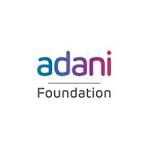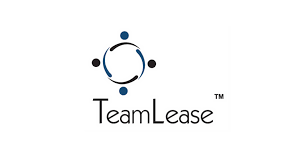NBFC-MFIs were the second largest provider of micro-credit with a loan amount outstanding of ₹75021 crores, accounting for 31.61 per cent to total industry portfolio.
Gross Loan Portfolio (GLP) as on 30th June 2021 showed an increase of roughly 4.2 % y-o-y over ₹2,27,727 crores as on 30th June 2020.
Removal of interest rate cap on microfinance loans also provides grounds for abuse as borrowers may be charged disproportionately high interest rates.
Need to extend an additional relief package for the MFIs under Credit Guarantee Scheme for MFIs (CGSMFI) and work sincerely towards increasing credit penetration.
Mumbai, December 24, 2021: Microfinance industry (MFI) is one of the most important paradigms of the Indian financial sector due to its grass-root coverage and its overarching vision of providing credit to the relatively unbanked sections of the society-but by no means un-bankable- thereby creating meaning and value in the lives of the people. This transformative effort constitutes an integral part of the mainframe economics and the well-being of the overall society. The amount of loan disbursed, dipped in the wake of the devastating COVID pandemic. However, the number of SHG’s with saving linkage increased from about 100 lakhs to about 112 lakhs.
The All-India NPA as percentage to loan outstanding under SHG-BLP declined from 5.19% in 2018-19 to 4.73% in 2020-21.
West Bengal retained its spot as the largest state in terms of portfolio outstanding (₹34,587 crore) followed by Tamil Nadu and Bihar (₹35,312 crore and ₹26,997 crore respectively). Among top 10 states, West Bengal had the highest average loan outstanding per unique borrower of ₹54,159 followed by Assam at ₹48,697.
These are some major findings of a report titled Micro Finance Institutions: Emerging Contours released by Infomerics Valuation and Rating Pvt Ltd., the well-known SEBI-registered and RBI-accredited financial services credit rating company.
Institutional Initiatives
The report thereby also mentions about the several initiatives taken by various institutions like exploring Fintech solutions to ensure customer safety and ease during the Covid pandemic. Many organizations introduced Apps and services to smoothen the process of credit, for example, Satin Creditcare Network introduced an App – a one-stop solution for the clients for their post-loan services, Muthoot Microfin introduced ‘Mahila Mitra’, a customer app where customers can pay installments, view loan track, apply for new loans, refer leads, file a complaint etc., SaGgraha Management Services adopted a Collection Management Application which could capture information of ‘Promise to Pay (PTP)’ date provided by customers allowing employees to follow-up with them.
Credit Guarantee Scheme for MFIs (CGSMFI) was initiated to provide guarantee by National Credit Guarantee Trustee Company (NCGTC) to Member Lending Institutions (MLIs) for loans extended by them to NBFC-MFIs and MFIs in the country.
Also, JLG promotion support initiative NABARD extends grant support for formation and nurturing of JLGs to Banks and other JLG promoting institutions. In 2020-21 a total of 41.27 lakh JLGs were promoted as compared to 41.80 lakh JLGs promoted during 2019-20.
Another notable initiative mentioned is EShakti, a pilot project for digitisation of SHGs that was launched by NABARD in the year 2015 in two districts Ramgarh (Jharkhand) and Dhule (Maharashtra) and later expanded to 100 districts across the country during 2016 and 2017. It aims at digitisation of data of all SHGs for enhancing the ease of doing business with SHGs. Beginning with 2 lakh SHGs in 2016 project E-Shakti now covers 12.33 lakh SHGs and is being implemented in 281 districts in the country.
Challenges
Despite the various initiatives taken by institutions, the risk factors for the industry still persists in lieu of Microfinance Regulation. The recent regulatory framework released by the RBI has also caused concern. The overall permissible indebtedness limit linked to the repayment capacity of the borrower at a household level has been capped at 50% of the household income. This could reduce the formal credit flow to the borrowers, who may perforce explore informal sources for credit. The industry has sought an additional support of ₹7500 crore under the CGSMFI since the initial ₹7500 crore announced in June 2021 has been exhausted.
Further, the delinquency rates of the MFI industry have been rising. The delinquency eased to 2.90% by the end of FY21 but rose to a clearly unsustainable level of 10.52% in the devastating second wave in the “30-59 days past due” category. The delinquency rate also rose in the “60-89 days past due” and “90-179 days past due” category. All this demonstrates that the repaying capacity of the poor class was severely debilitated by the pandemic.
The removal of interest rate cap on microfinance loans also opens abuse as borrowers may be charged disproportionately high interest rates. However, the RBI has cautioned that chasing asset growth and good returns should not pull the lenders and emphasized that lenders are important in harmonising growth and welfare.
The way ahead
The report mentions that operating at the grass-root level, it becomes imperative for the regulators to constantly undertake mid-course correction, wherever necessary, in the light of cross-country experience, best practices and nation-wide experiences and enhance the outreach, adequacy and timeliness of credit while reducing the cost of credit. At the current juncture, there is a need to explore an additional relief package for the MFIs under CGSMFI and work sincerely towards increasing credit penetration. Despite augmented size, there are large numbers of people, who still depend on informal credit.
The report is optimistic about the future of the industry in the near term given that the economic recovery seems here to stay despite some persisting concerns of supply disruptions, rising input prices, delta, and omicron variants. This requires constant support and understanding from the regulators.
 Newspatrolling.com News cum Content Syndication Portal Online
Newspatrolling.com News cum Content Syndication Portal Online







